Part 1 of a Two-Part Story
My friend Nirma has dedicated her life to helping others overcome adversity. She helps women climb the world’s tallest mountains.
Born in the Khumbu region of Nepal, Nirma grew up in a mountain village situated high in the Himalaya and in the shadow of Mt. Everest. Nirma’s tiny hillside hamlet is a six-day walk to the local bus station. From this rural bus station, a seven-hour bus ride takes you to Nepal’s capital, Kathmandu.
Although she grew up in a typical Himalayan village, Nirma’s upbringing was anything but common.
First, the eldest daughter of simple farmers, Nirma, attended school.
Second, excelling early in her classes, Nirma’s teachers advanced her age on her official records to enable her to skip several grades and learn at a pace more attuned with her intellect.
Third, upon graduating, Nirma won a scholarship to attend 3Sisters Trekking, an all-female guiding company.
3Sisters Trekking works in partnership with Empowering Women of Nepal (EWN), a nonprofit that teaches disadvantaged Nepali girls to become mountain guides. Mountain guides in Nepal, known as sherpas, are legendary for their strength and mountain climbing skills. The role of guide is also traditionally reserved for men.
I came upon 3Sisters Trekking while researching Himalayan trekking companies. Once I read about the all-female guiding teams and the social empowerment work of their sister nonprofit, I knew this was the expedition outfit for me.
Nirma led our team of four young Nepali women porters, who were guides in training (more about these amazing young women in Part 2 of this story) and five of us foreign trekkers. We had all independently signed up for the twelve-day hike to one of the Himalaya’s most pristine spots: Annapurna Base Camp, known in climbing circles as ABC.
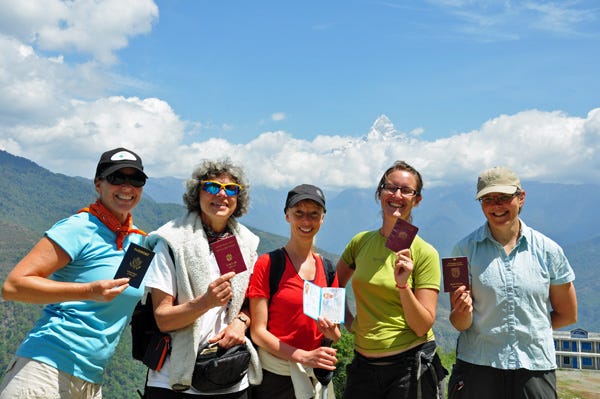
I had chosen to hike to ABC because there is only one way to get there: via the Annapurna Sanctuary route. I had heard that the climb through the Sanctuary was most beautiful in springtime, when the surrounding rhododendron forest is in bloom.
I was anticipating a lovely hike on a flower-strewn trail. The description of my trek was enticing:
Annapurna Sanctuary: A classic walk right into the heart of the mountains. This popular trek ascends through picturesque villages to the center of the Annapurna range, offering dramatic mountain scenery.
Standing in the middle of the Sanctuary, surrounded by towering snowy peaks of up to 26,200 feet (8,000 m.), is a truly awe-inspiring experience. Sunrise and sunset are magical as you watch the sun dance on the peaks of Annapurna 1, Annapurna South, Annapurna 3, and Machapuchare.
The maximum altitude reached on this trek is 14,435 feet (4,400 m.) at Annapurna Base Camp. The trail up is often steep, and the Sanctuary trek is perhaps one of the more challenging of the teahouse treks.
I was so excited I neglected to fully comprehend the implications for the phrase: “The trail up is often steep and the Sanctuary trek is perhaps one of the more challenging of the teahouse treks.” This seemingly innocuous description, coupled with the fact that Nepalis tend to soften bad news, meant I was in for one hell of a hike.
Gentle Lies
Several days into the trek, I started to decipher the true meaning of Nirma’s guiding instructions. For instance, she would say, “The trail tomorrow will be a little bit up,” which meant you were going to experience copious amounts of pain.
Here’s a translation of some Nepali trekking speak:
Gradual Up = Legs will begin to shake
Little Bit Up = Lungs will be on fire
Up Up = Sweat will pour from your ears
This is our guide Nirma, in her gentle way, lying to me about the climb ahead. It would be “more than 500 steps,” she says with a giggle.
I’m not sure I appreciated her humor at the time. Yes, it was more than 500 steps. And 500 more. And 500 more. And this was only Day 2.
In fact, the entire trek was a repetition of “little bit up,” followed by “gradual up,” and then the dreaded “up up.” I think the real goal was “throw up.”
Was it worth it? Totally.
Even during the final push, when heavy snow blanketed the trail. We plunged ahead on that final ascent, breaking trail up to our knees and skittering across ice-crystal-covered avalanches.
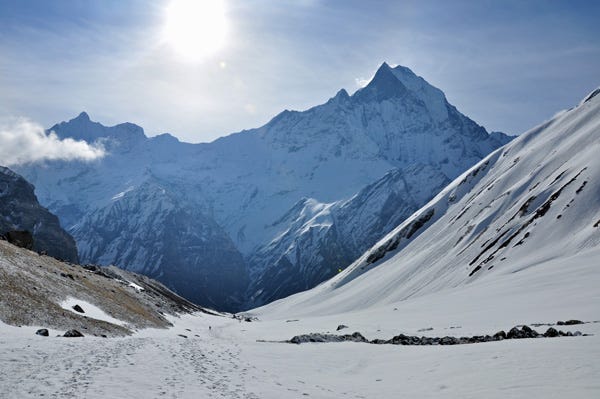
We reached our ABC destination after one of our longest days on the trail and rested there overnight. At sunrise the next morning, we hiked the final meters to the highest spot of our journey, an outcropping surrounded by sheer cliffs.
As we stood on this precipice at the break of dawn, we were first enveloped in mist. Then the rising sun burned through the thin air, revealing the most impressive mountains in the world. Here we stood in the center of the Himalayan range, encircled by dizzying snow-covered peaks. It was majestic.
And reverent. Colorful primary-colored prayer flags flapped in the wind, juxtaposing the harsh whiteness and reminding us of the sanctity of the spot.
Each of us, at first reveling in our triumphant climb, soon became subdued, silently absorbing the immensity of this unforgettable place. We stayed on the mountain plateau for only about twenty minutes because of the cold, yet those twenty minutes were some of the most memorable of my life.
They offered me a perspective that is only gained through unbelievably hard work, an unfettered belief in oneself, and true teamwork and companionship. It was an awesome experience.
For the Love of Yak
Equally amazing was my newfound love of the yak, which in its various forms helped us struggle up the mountains. The nak, a female yak, produces milk that is turned into a tasty (if slightly rubbery) type of nak cheese.
On good days, our hardworking muscles were rewarded with nak-cheese pizza. Pretty tasty when you’re famished and can’t look at another serving of daal baht, the local staple of pickled vegetables, curried lentils, and rice. Unfortunately, about halfway through the trek, my body started to reject daal baht in a big way.
We also ate lots of momos (dumplings) and curried fried potatoes—as many as twelve potatoes each during a single lunch break! We were hungry gals, burning lots of calories on our journey “up up” the mountain.
The yak also helped us once we got off the trail for the night. The weather in the Himalaya is always unpredictable, and we witnessed some pretty intense storms.
Rather than stocking up in Kathmandu, I chose to support the local communities we were passing through and buy my warm clothes on the trek. Along the way, I picked up a woolly sweater, a favorite multi-hued hat, and yak-knit booties. Thankfully, I left this look on the mountain.
Another way we got warm was to take bucket showers. For a small fee, a large pot of boiling water could be delivered to the outhouse, offering a chance to rinse off the sweat and grime of the trail.
But there was a small hitch: the water was often too hot to bathe in, so you needed to mix in colder water. The water we used to moderate the boiling water was the existing bucket of water already in the outhouse. Yes, toilet water.
I’m not sure why we thought it was okay to bathe in toilet water, because frankly, the idea now seems disgusting. I’m going to blame that lapse of judgment on the altitude.
Look for Part 2 of this two-part story next week.
Have you ever worked hard to achieve something? What was it? Who helped you achieve your goal along the way?
⭐ An Adventure A Week is a serial based on my autobiography “Adventures Of A Nomad: 30 Inspirational Stories.” Can’t wait for the next installment? Get the book.
If you like this essay, please leave a comment or share it with others. This will help more readers find my work. 🦋 Thank you!
Christened “Wander Woman” by National Geographic, Erin Michelson is a professional speaker and author of the Nomad Life™ series of curated trips and travel guides, including the #1-ranked “Explore the World with Nomads.”



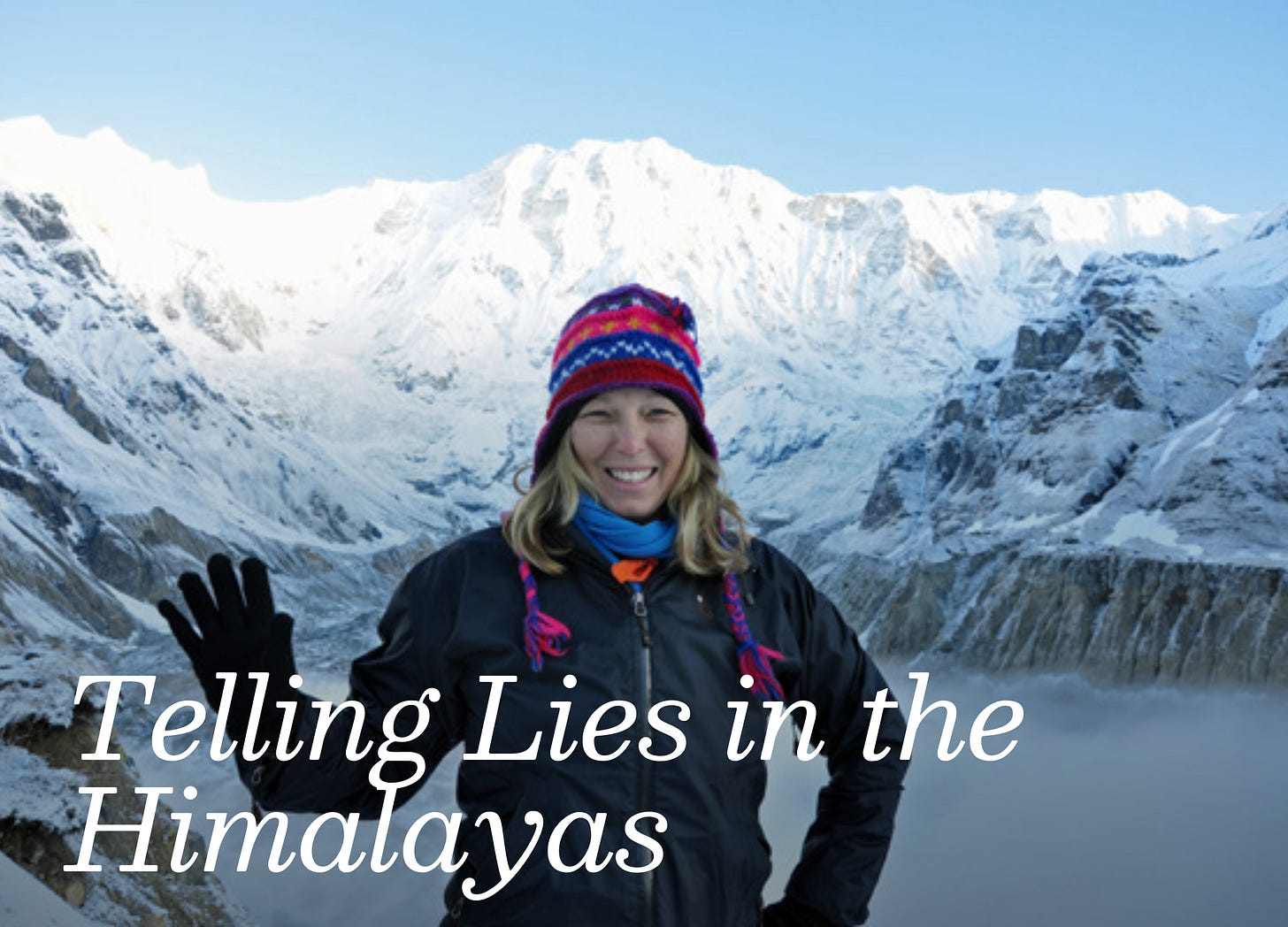
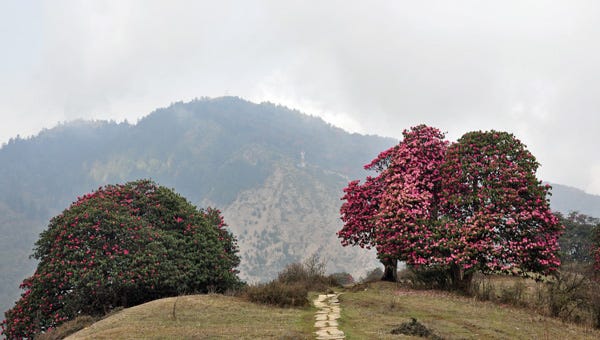
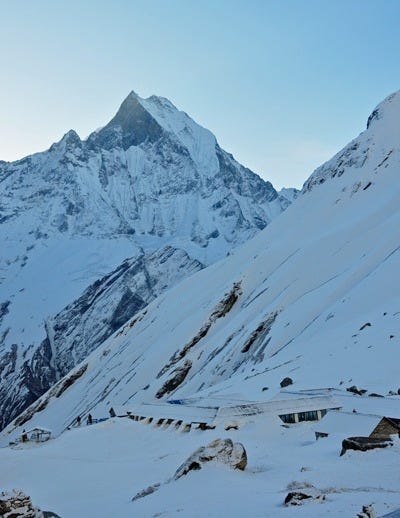
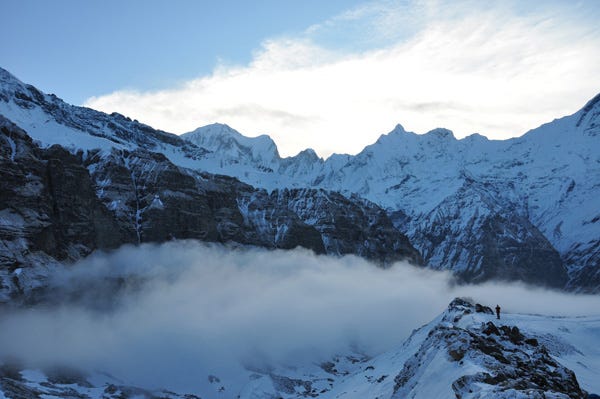

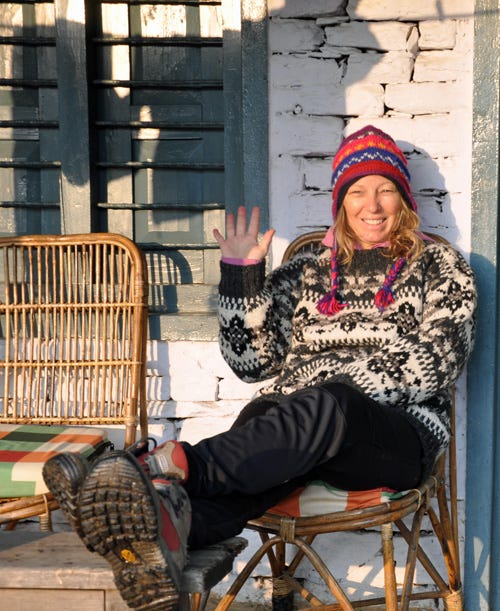
I also did this trek. I remember the beauty, the friendly lodging people, a day of rain, snow at ABC, and overall great experience. I also ate many of those pizzas. The porters taught us card games. And lots of rhododendrons in bloom.
I’ve done this trek too, and your story brought so many memories back. I was 25 at the time, pretty fit, and still found it really challenging. I’ve done both Annapurna Base Camp and Everest Base Camp — totally different experiences, nothing alike! Thank you for writing this, it took me right back there.